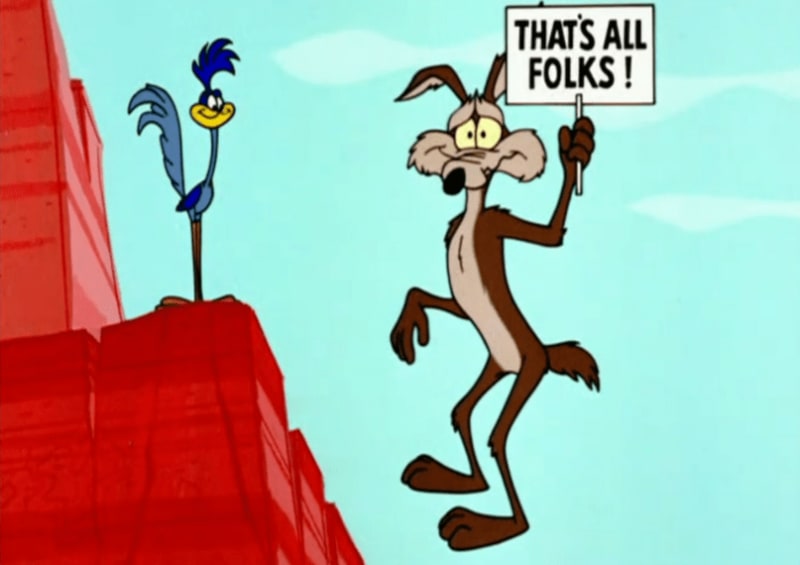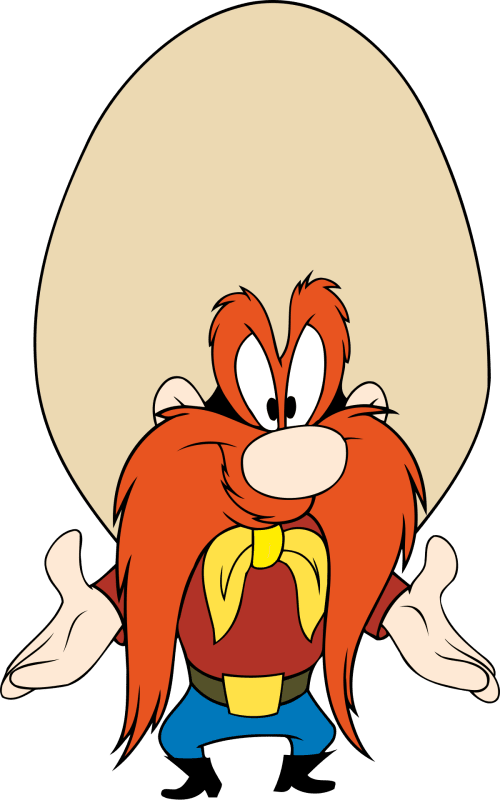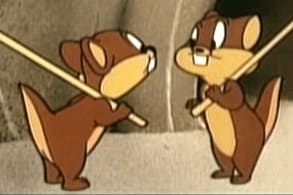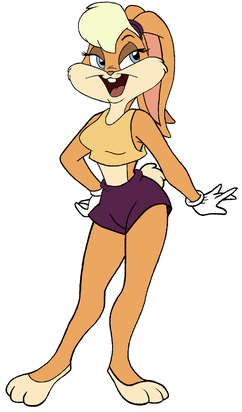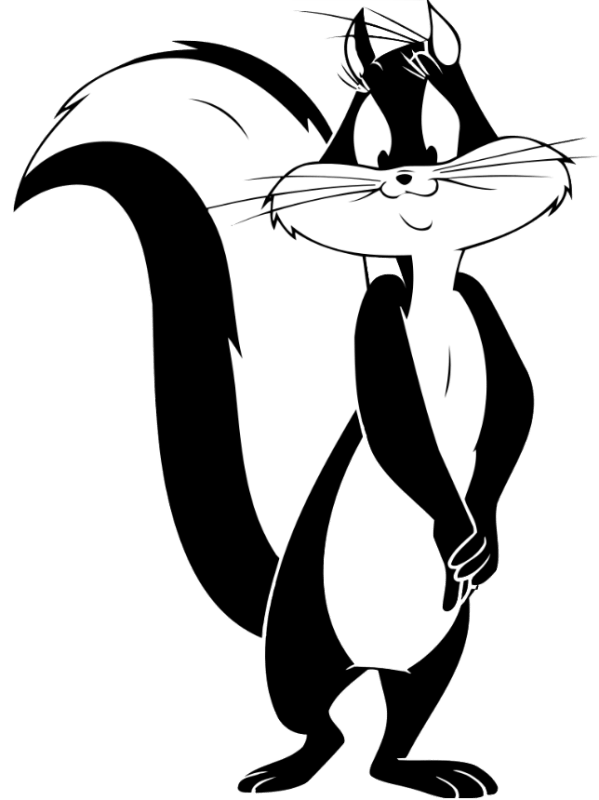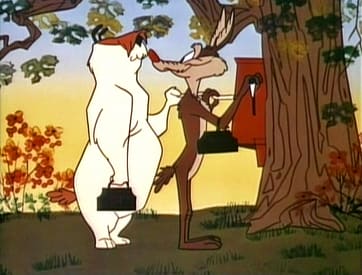CategoryHero

Bugs Bunny is a famous animated character, best known for being the star of the Looney Tunes and Merrie Melodies series of short films produced by Warner Bros. during the Golden Age of American Animation. Due to his popularity during this time, he has become an American cultural symbol and the corporate mascot of Warner Bros. He was originally voiced by Mel Blanc, but is now portrayed by a number of voice actors.

Daffy Duck is a character from the Looney Tunes and Merrie Melodies series. He is often portrayed as a rival and sometimes even a best friend to Bugs Bunny. Daffy was among the first of the new "screwball" characters that emerged in the late 1930s, replacing the earlier "everyman" characters such as Mickey Mouse and Popeye that were popular in the earlier part of the decade.

Speedy Gonzales is a well-known mouse character featured in the Looney Tunes and Merrie Melodies cartoons. He is commonly referred to as "The Fastest Mouse in All of Mexico" due to his exceptional speed. In addition to his speed, Speedy is also characterized by his exaggerated Mexican accent.
CategoryVillain

Elmer J. Fudd is a well-known character from the Looney Tunes series, widely recognized as one of Bugs Bunny's arch-rivals. Alongside Marvin the Martian and Yosemite Sam, he is a recurring villain in the series, although he is not as threatening or power-hungry as the others. Instead, he is depicted as somewhat dim-witted and unlikely to cause significant harm to Bugs.

Sylvester James Pussycat Sr. is a tuxedo cat featured in the Looney Tunes and Merrie Melodies series of cartoons. He is often seen pursuing Tweety, Speedy Gonzales, or Hippety Hopper. In instances where he is depicted with an owner, he is most commonly associated with Granny, though in early cartoons he was paired with Porky Pig.
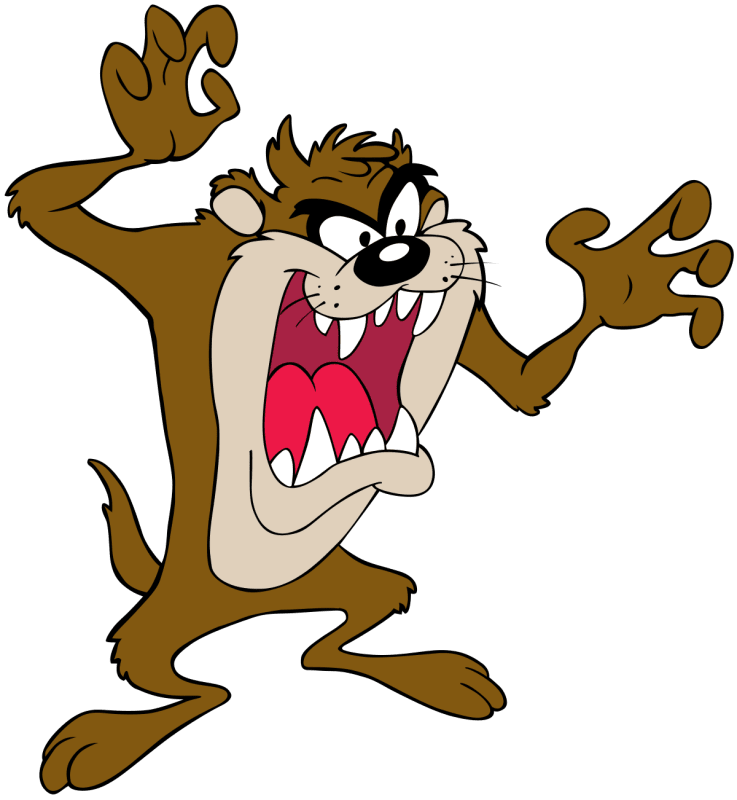
Taz is depicted as a not-too-bright wild animal with a quick temper and limited patience. He has an insatiable appetite, and will consume anything in sight. Taz is famous for his distinctive speech, which mostly involves grunts, growls, rasps, and screeches. He is also known for his ability to spin and fiercely bite through nearly anything.
CategorySupport

Bosko and Honey are animated characters created by animators Hugh Harman and Rudolf Ising, both former Disney animators. Bosko is the central figure in Leon Schlesinger's cartoon series and has starred in over three dozen Looney Tunes shorts produced by Warner Bros. Throughout the 1920s and 1930s, Bosko was voiced by Carman Maxwell and Johnny Murray, and in the early 1990s, he was voiced by Don Messick in the series Tiny Toon Adventures.
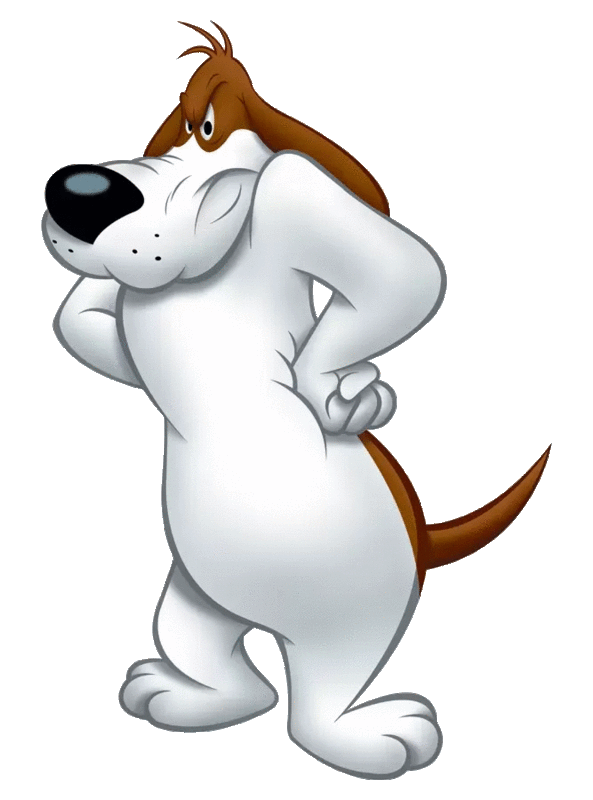
Barnyard Dawg, also referred to as Mandrake, George P. Dog, Rover, or George P. Mandrake, is a character in the Looney Tunes series. He serves as Foghorn Leghorn's arch-enemy, and in various other cartoons, he faces competition from other foes including Henery Hawk, the Weasel, Daffy Duck, and Sylvester.

Beaky is a thin and tall buzzard that closely resembles a vulture or condor. He has black body feathers and a white ruff around his neck. His neck is long and thin, with a noticeable Adam's apple, and lacks feathers on both his neck and head. His beak is large, either yellow or orange, and he sports a goofy grin with a perpetually sleepy expression in his eyes.

Buddy was created in the aftermath of Hugh Harman and Rudolf Ising's departure from their agreement with producer Leon Schlesinger in 1933. Harman and Ising went to work for Metro-Goldwyn-Mayer and took Bosko with them, as they held the rights to the character. Schlesinger, without his animators and leading character, was eager to establish his own animation studio and keep his contract with Warner Bros.

The scenario for the character Charlie Dog (also known as Rover) was created by Bob Clampett in the cartoon short "Porky's Pooch", which was written by Warren Foster and released on December 27th, 1941. The cartoon follows a homeless hound's efforts to be adopted by bachelor Porky Pig, though he ultimately fails. Charlie Dog's voice and accent, characterized by a gruff Brooklyn Bugs Bunny-like tone, was provided by Mel Blanc, Joe Alaskey, and Eric Bauza, making him a wily and intelligent character.

Claude, an animated cat character, originated from a series of similar feline characters utilized by Chuck Jones from 1943 to 1945. These cats, characterized by their black fur and nervous personalities, had similarities in appearance and behavior. In "The Aristo-cat", Claude's first speaking role in a film released in 1943, he was paired against the manipulative mouse duo of Hubie and Bertie by Chuck Jones.

Foghorn Leghorn is a character that was directly influenced by Senator Claghorn, a blustery Southern politician played by Kenny Delmar. This character was a regular feature on the popular 1940s radio show "The Fred Allen Show". Foghorn Leghorn inherited many of Senator Claghorn's catchphrases, including "That's a joke, I say, that's a joke, son". The inspiration for Senator Claghorn was a Texas rancher who had a habit of saying this.

Gabby was created by Ub Iwerks for his brief stint with Looney Tunes as a sidekick for Porky Pig. The character made its debut in the 1937 short "Porky and Gabby," which focuses on a camping trip gone awry due to car problems. Cal Howard provided Gabby's voice. Gabby closely resembles Porky with a beard, horns, and a scowl, and is characterized by his irritable and short-tempered nature, which makes him an excellent foil for Porky's shy and easy-going personality.
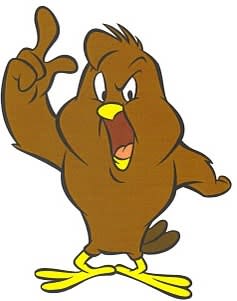
Henery is diminutive in size, even when compared to other chicken hawks. He is significantly shorter than his father. Due to his tiny stature and his inability to correctly identify a chicken, it can be concluded that he is still very young. Despite his youth, Henery possesses a bold and brash demeanor, as evidenced by his gangster-like voice. His vocal cords are similar to those of Tweety, minus any speech impediments.

Hubie and Bertie are mice characters in the famous Looney Tunes and Merrie Melodies cartoon series. Although not as well-known today, these characters are significant as they represent some of director Chuck Jones' initial attempts at comedic storytelling, as opposed to merely evoking cuteness.

Michigan J. Frog is a minor character who has made occasional appearances in Looney Tunes short films, first appearing in "One Froggy Evening" in 1955. He is most well-known as the mascot of The WB Network and its Kids' WB! programming block. The character was inspired by Ed Sullivan, as acknowledged by Chuck Jones.
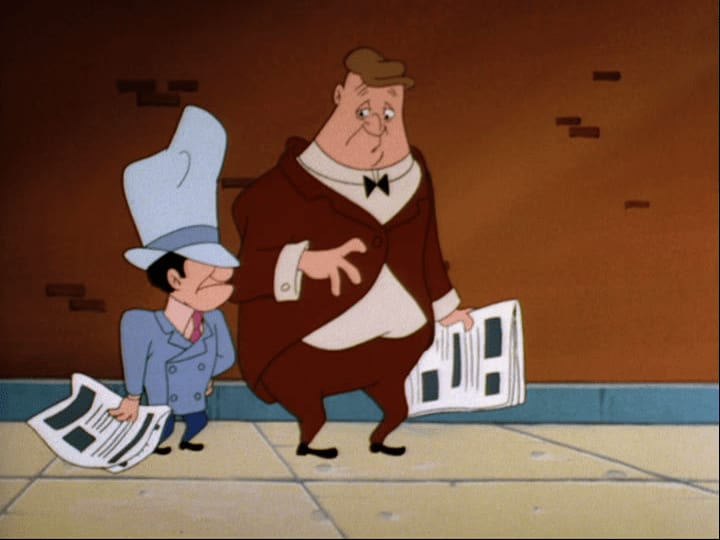
Rocky and Mugsy are a duo of gangsters featured in the animated shorts. Rocky, the mastermind and leader, is the shorter one with black hair and a hat that covers his eyes. He is frequently seen smoking a cigarette. Mugsy, on the other hand, is the brawn of the pair and acts as Rocky's lackey. He is large and dim-witted.
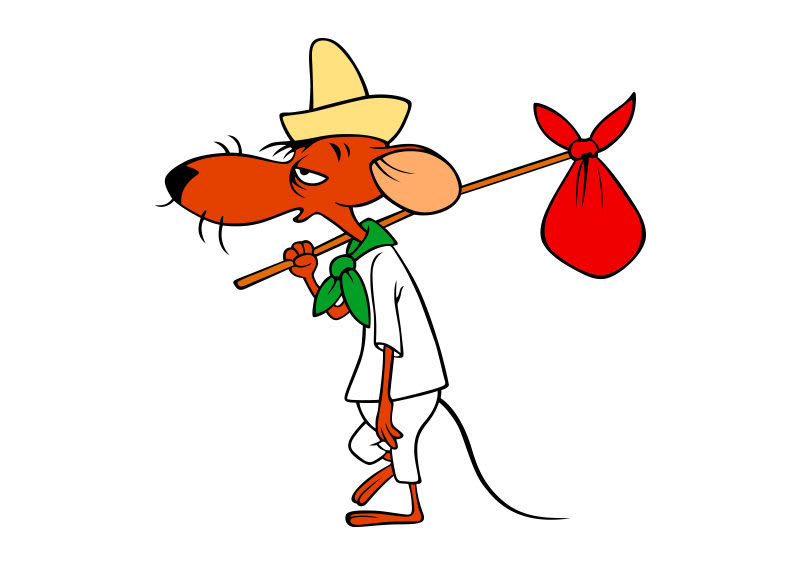
Slowpoke Rodriguez is a character in the Looney Tunes franchise. He is famously known as the slowest mouse in Mexico, in contrast to his cousin Speedy Gonzales, who is the quickest mouse in the country. Despite his slow movements, Slowpoke is highly cunning and equally as intelligent as Speedy is swift. He also possesses impressive skills in gunfighting and hypnotism.

 Bugs Bunny
Bugs Bunny Daffy Duck
Daffy Duck Porky Pig
Porky Pig Speedy Gonzales
Speedy Gonzales Tweety
Tweety The Road Runner
The Road Runner Elmer Fudd
Elmer Fudd Gossamer
Gossamer Marvin the Martian
Marvin the Martian Nasty Canasta
Nasty Canasta Sylvester the Cat
Sylvester the Cat Tasmanian Devil
Tasmanian Devil Wile E. Coyote
Wile E. Coyote Witch Hazel
Witch Hazel Yosemite Sam
Yosemite Sam Angus MacRory
Angus MacRory Bosko & Honey
Bosko & Honey Barnyard Dawg
Barnyard Dawg Beaky Buzzard
Beaky Buzzard Buddy
Buddy Blacque Jacque Shellacque
Blacque Jacque Shellacque Cecil Turtle
Cecil Turtle Charlie Dog
Charlie Dog Claude Cat
Claude Cat Colonel Shuffle
Colonel Shuffle Foghorn Leghorn
Foghorn Leghorn Foxy
Foxy Gabby Goat
Gabby Goat Goofy Gophers
Goofy Gophers Granny
Granny Hector the Bulldog
Hector the Bulldog Henery Hawk
Henery Hawk Hubie and Bertie
Hubie and Bertie Hugo the Abominable Snowman
Hugo the Abominable Snowman K-9
K-9 Lola Bunny
Lola Bunny Marc Antony and Pussyfoot
Marc Antony and Pussyfoot Melissa Duck
Melissa Duck Michigan J. Frog
Michigan J. Frog Playboy Penguin
Playboy Penguin Penelope Pussycat
Penelope Pussycat Pepé Le Pew
Pepé Le Pew Pete Puma
Pete Puma Petunia Pig
Petunia Pig Ralph Wolf and Sam Sheepdog
Ralph Wolf and Sam Sheepdog Rocky and Mugsy
Rocky and Mugsy Slowpoke Rodriguez
Slowpoke Rodriguez





